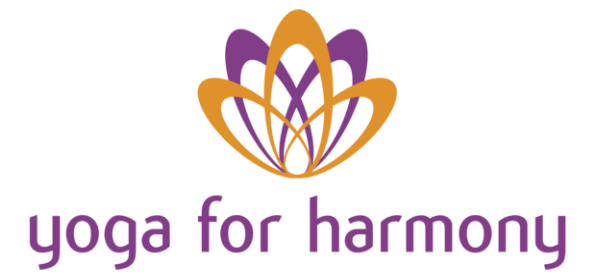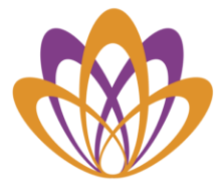Mantra is a form of energy made up of vibrations or wavelengths
Mantra Yoga belongs to a long history of man's striving to find the word whose utterance unlock the door to Absolute Knowledge. They are Sanskritt syllables, words or phrases which are repeated many many times usually as a path to meditation.
The use of sound and Mantra are as much a part of Classical yoga as the Asana, Pranayama and Meditation.
Mantra is a Sanskritt word that translates as 'tool of the mind'. It is derived from the two Sanskrit words of Manas - 'mind' and Trai - 'to protect, to set free'. Mantras are often repeated to guard the mind from unwanted thoughts. Mantra meditation is said to help to 'refine the mind'.
Chanting Mantra creates various frequencies of sound waves.
These sound waves or vibrations affect our thoughts, feelings and how we experience the world around us - they change and influence our mood. Research has shown that the cerebral cortex can become charged or positively stimulated by certain kinds of sound vibration. Each Mantra has its own unique vibration, and with regular repetition, this vibration builds and resonates through the entire nervous system. This helps to break up and change unhealthy or negative chemistry or energy patterns stored in the physical and subtle bodies, and cleanse deep-rooted thoughts or 'samskaras' from the conscious and subconscious.
On a physical level Mantras are said to be able to lower the body's demand for large amounts of oxygen, strengthen the diaphragm and relax the sympathetic and parasympathetic nervous system. It is believed that the sounding of mantras gives a vibro massage to various glands and vital organs in the thoracic cavity and abdomen..
Generally Yogic Mantras use the ancient language of Sanskrit
There are three main types of Mantra.
Saguna Mantras - these invoke specific deities or aspects of the Absolute, for example:-
'Ram' (rahm) - the energy pattern for truth, righteousness and virtue in their male aspect, this powerful Mantra is made up of three seed sounds.
Sita (see-tah) - this is the female aspect of the energy pattern of Ram. It can be repeated with Ram as 'Sitaram'. These two Mantras embody the energy existing in an ideal marriage or union.
Shyam (shyahm) - representing cosmic love and compassion in the male aspect; this Mantra transmutes all emotions into unconditional love.
Radha (rah-du) - is the female aspect of Shyam, symbolising the cosmic love of the divine mother.
Om Namah Shivaya (ohm nuh-muh shivai-uh) this is a purifying energy pattern that destroys our negative qualities.
Nirguna Mantras - these are abstract and declare the meditator's identification with the Absolute, for example:-
Om (ohm) - this is the original Mantra, the root of all sounds and letters, and thus of all language and thought.
Soham (sho-hum) - this Mantra is unconsciously repeated each time we take a breath - inhaling 'so' and exhaling 'ham'. It means 'I am That' - beyond the limitations of mind and body, at one with the Absolute.
Bija Mantras - or seed Mantras are aspect of 'om' and derive directly from the forty primeval sounds. These are initiated into a Mantra by a Guru, who will invest it with his own pranic energy. These are considered to be very powerful and are not included for examples.
The repetition of Mantra is known as 'Japa'
'Japa' is the name given to meditation, using a Mantra. The Sanskrit word 'Japa' has several translations, including 'to mutter', or to 'turmn' or 'rotate' (this applies to both the rotation of consciousness, and the rotation of the Mantra). Japa is associated with Tantra Yoga where the purpose is to stimulate and encourage psychic awareness and awakening. Japa is also part of Bhakti Yoga where the focus is purely devotional and concentrates on heartfelt repetition of the name of the Divine (Nishkam Japa).
'Om' / 'Aum' and it's significance
The Madukya Upanishad says:-
'A' is the beginning of all sounds - every language begins with the letter 'A' or 'ah'. It is pronounced simply by opening the mouth and making a sound. The sound comes from the throat where the tongue is rooted. Audible sound begins with 'A'
The sound then comes forward between the tongue and the palate up to the lips and 'U' or 'oo' is produced.
By closing the lips 'M' is produced.
So - the 'creation' is 'A', the 'preservation' is 'U' and the 'culmination' is 'M'. 'AUM' therefore includes the entire process of sound and includes all the other sounds, all syllables and all vibrations.
After the verbal sound ends there remains an unspoken vibration or 'anagata'. This always remains within you even before saying the 'A' and after finishing the 'M'.
Patanjali describes 'AUM' as the 'name' given to describe all the aspects of 'Brahman' or the 'Absolute' in the Hindu Trinity. It is the 'name' given to describe an infinite God. Not God specific to any religion but a God which impasses everything, without beginning, without end, infinite and omnipresent (present everywhere). An eternal word for what was, what is, what shall be and what beyond is in eternity. 'All is OM'.
'AUM' is also said to represent the four states of consciousness:-
the waking state / outward moving consciousness
the dreaming state / inward moving consciousness
the deep sleep state / no dreams, no desires - unconsciousness
the supreme consciousness / beyond the senses - meditation
The Sanskrit letter as written:-

Lower curve = 'A' / Upper curve = 'U' / Curve from centre = 'M'
Crescent shape = 'Maya' the veil of illusion / The Dot = transcendental state
In Yoga, group chanting of Mantra is known as 'Kirtan'
Traditionally Kirtan takes place in Yoga Ashrams near the end of the day to help release pent up emotions and disperse the build up of heat and energy generated through meditation practices.
Kirtan is the practice of chanting universal sacred Mantras together. It is the Yoga of Sound and a form of meditation, we use our voices to lead us into meditation. You do not have to be able to sing to chant - voices blend together as one.
Kirtan is the call and response singing of a Mantra, that usually focuses on Radha, Krishna, Sita, and Rama.
Derived from a Sanskrit root meaning to call, recite, praise, or glorify, put simply, Kirtan is the act of praising and glorifying some form of divinity. While such glorification can be expressed in a variety of ways, including through poetry, drama, dance, or any form of oral recitation, Kirtan, in its most well-known form.

Enquiry Form
Fill in the form below and we will get back to you shortly.






